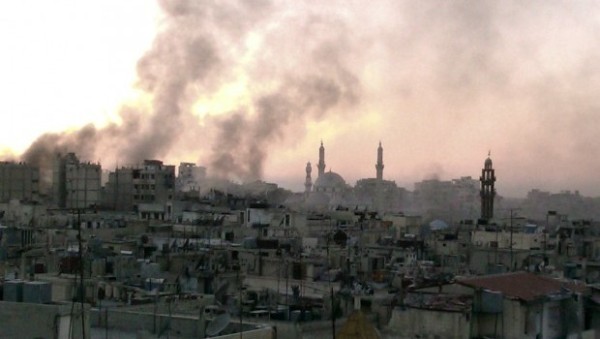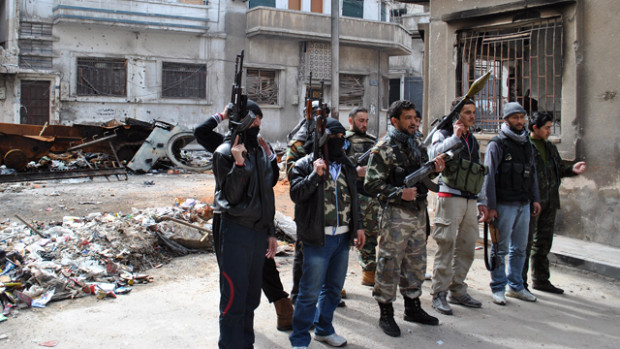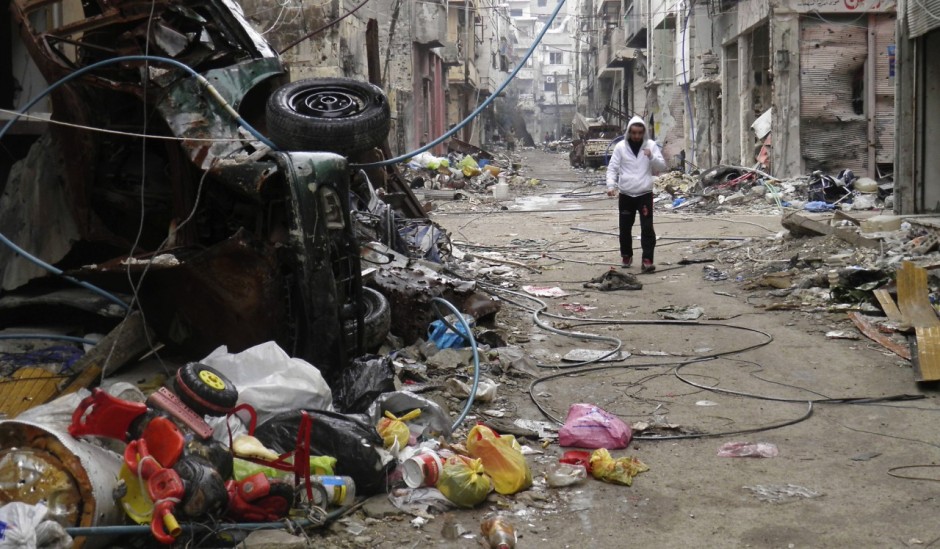Homs is one of the flashpoints of the civil war in Syria, which is tearing apart the country. Peaceful protests in Homs, north of Damascus, were met with a brutal response by government forces, forcing rebels to take up arms in a bitter struggle that has degenerated into a military stalemate symptomatic of the war itself.
Talal Derki, a Syrian filmmaker, has recorded the battle for Homs in a graphic documentary, Return to Homs, which will be screened at Toronto’s Canadian International Documentary Festival (Hot Docs) on April 25, April 26 and May 3.
The festival runs from April 24 to May 4, and is a showcase for 197 films from 43 countries.

This film transports a viewer into the ruins of Homs, a landscape of urban devastation. Homs’ old quarter, captured by the rebels and still held by them, became a killing field after the Syrian army imposed a siege.
Return to Homs unfolds between August 2011 and August 2013 and revolves around two young rebel leaders, Abdul Basset, 19, and Osama, 24. Basset was a promising soccer player who had played for the Syrian national team. Osama is a medic and photographer. Now they are street fighters fighting for what they describe as freedom and dignity.
As the film opens, the camera pans on a city whose buildings have been reduced to eerie hulks by artillery barrages and aerial bombardments. The scene quickly shifts to demonstrations in which protesters shout, “Leave, leave, leave!” The reference is to Syrian President Bashar Assad, who has made the fateful decision to crush the uprising, come what may.
In August 2011, five months after the eruption of the rebellion, security forces fire on protesters, stirring intense anger and calls for revenge. “Bashar kills his own people,” they chant in unison. “The people want a no-fly zone,” they add in a reference to their demand for Western intervention, which is not forthcoming.
As Derki suggests, the Assad regime is unsparing in its assault against the rebels, who are branded terrorists. The brother, parents and friends of a known rebel fighter are murdered in cold blood. Soldiers set up checkpoints throughout Homs, hoping to encircle the rebels.
Civilians die in the crossfire. A blood-splattered boy lies on the floor, adults mourning his untimely death.
“My dream is to become a martyr,” Basset sings.
Derki brings the war up close. A wounded rebel on a stretcher is carried to a makeshift clinic. Doctors try to save him, but he succumbs to his injuries. His distraught father cries. Men fire guns into the air as the casket is removed.
“Tomorrow, the regime will fall,” Basset and his fellow rebels chant.

The regime presses on with its offensive. Rockets slam into residential neighbourhoods. “The Alawites come at us with tanks,” wails a woman, referring to Assad’s minority Alawite government. As fighting rages, young men rip down an outsize poster of Assad.
United Nations observers arrive to assess the situation. They listen to complaints that innocent people have been driven out of their homes, in a reflection of the refugee crisis the war has created.
The war resumes with a vengeance after the observers depart, and Derki documents the carnage.
The rebels hit a tank and it explodes in a ball of fire. The regime intensifies the siege. Rebels swinging sledge hammers punch holes in concrete walls for firing positions. Corpses of fallen rebels moulder away. A gun battle breaks out. A rebel is hit by a bullet and crumples to the ground.
Such are the visceral images in Return to Homs, a film that takes us far beyond the headlines and gives us a deeper understanding of the human costs of this protracted war.
Tickets to the festival can be purchased by clicking on www.hotdocs.ca.
